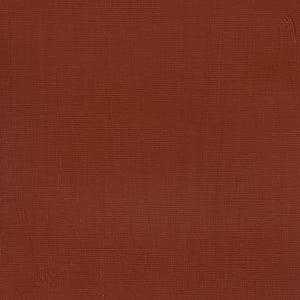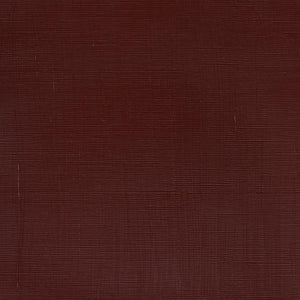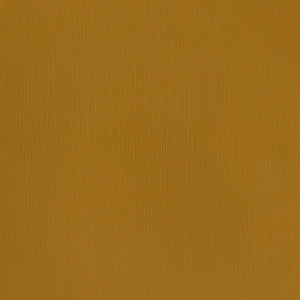
Believe it or not, the iron contained in the haemoglobin that runs through our veins is the same iron that lies deep in the earth’s core. And it’s comparable, if not exactly the same, to the iron oxide pigment found in a tube of Winsor & Newton Professional Acrylic paint.
The cosmic origins of iron
To get our heads around this, we need to go back approximately 13.9 billion years to the Big Bang. This enormous event initiated a rapid expansion of time and space that eventually produced atoms, the building blocks of all known matter. Ten billion years later, our solar system began to form. More time passed, and Earth’s atmosphere formed. Our planet’s crust became a giant mixing bowl of elements from galaxies and asteroids colliding and stirring. This alchemy formed the earth’s core elements, of which iron makes up an impressive 32.1%.
From the Earth's core to the artist's palette
Iron also makes up an enormous 85% of the Earth’s core. Combined with silica in the Earth’s crust, iron produces sand or clay that then accumulates in certain parts of the world, such as Italy’s Siena and Umbria. It comes as no surprise that the earth pigments sourced from these regions have frequently been used in artists’ palettes, from Palaeolithic paintings to the Renaissance. And although early alchemists and scientists and have synthesised new pigments, they are still having to manipulate natural matter and elements into modern pigments, such as quinacridone and phthalocyanine.
The connection between human blood and iron pigments
When it comes to the human body, it is true that the iron running through our bloodstream is similar to that of the Earth's core, and as a result similar to the Winsor & Newton Iron Oxide pigment. You might notice that natural yellow oxides are labelled as PY43, whereas synthetic are PY42; and red oxides are PR102, while synthetic are PR101. It’s important to note, however, that pure iron is an element, and behaves very differently to compounds that contain iron. Iron oxide, for example, is a compound of iron and oxygen, and haemoglobin is a compound of carbon, hydrogen, oxygen, nitrogen, sulphur and iron.
The next time you pick up a paintbrush, consider this: everything on Earth that is depicted in paintings is created from the very elements that the Earth comprises. Therefore the artist, the materials and the subject are, in essence, made of the same stuff.












![WN PWC KAREN KLUGLEIN BOTANICAL SET [FRONT]](http://www.winsornewton.com/cdn/shop/files/136444.jpg?crop=center&v=1740654068&width=20)
![WN PWC KAREN KLUGLEIN BOTANICAL SET [OPEN 2]](http://www.winsornewton.com/cdn/shop/files/136447.jpg?crop=center&v=1740654068&width=20)
![WN PWC ESSENTIAL SET [FRONT]](http://www.winsornewton.com/cdn/shop/files/137583.jpg?crop=center&v=1740762356&width=20)
![WN PWC ESSENTIAL SET [OPEN]](http://www.winsornewton.com/cdn/shop/files/137581.jpg?crop=center&v=1740762356&width=20)
![W&N GALERIA CARDBOARD SET 10X12ML [B014096] 884955097809 [FOP]](http://www.winsornewton.com/cdn/shop/files/138855.jpg?crop=center&v=1740761853&width=20)
![W&N GALERIA CARDBOARD SET 10X12ML 884955097809 [OPEN]](http://www.winsornewton.com/cdn/shop/files/138856.jpg?crop=center&v=1740761853&width=20)

![W&N PROMARKER 24PC STUDENT DESIGNER 884955043295 [FRONT]](http://www.winsornewton.com/cdn/shop/files/78674_d4d78a69-7150-4bf4-a504-3cb5304b0f80.jpg?crop=center&v=1721326116&width=20)

![W&N PROFESSIONAL WATER COLOUR TYRIAN PURPLE [SWATCH]](http://www.winsornewton.com/cdn/shop/files/136113.jpg?crop=center&v=1724423390&width=20)
![W&N WINTON OIL COLOUR [COMPOSITE] 37ML TITANIUM WHITE 094376711653](http://www.winsornewton.com/cdn/shop/files/9238_5073745e-fcfe-4fad-aab4-d631b84e4491.jpg?crop=center&v=1721326117&width=20)
![W&N WINTON OIL COLOUR [SPLODGE] TITANIUM WHITE](http://www.winsornewton.com/cdn/shop/files/131754_19b392ee-9bf6-4caf-a2eb-0356ec1c660a.jpg?crop=center&v=1721326118&width=20)